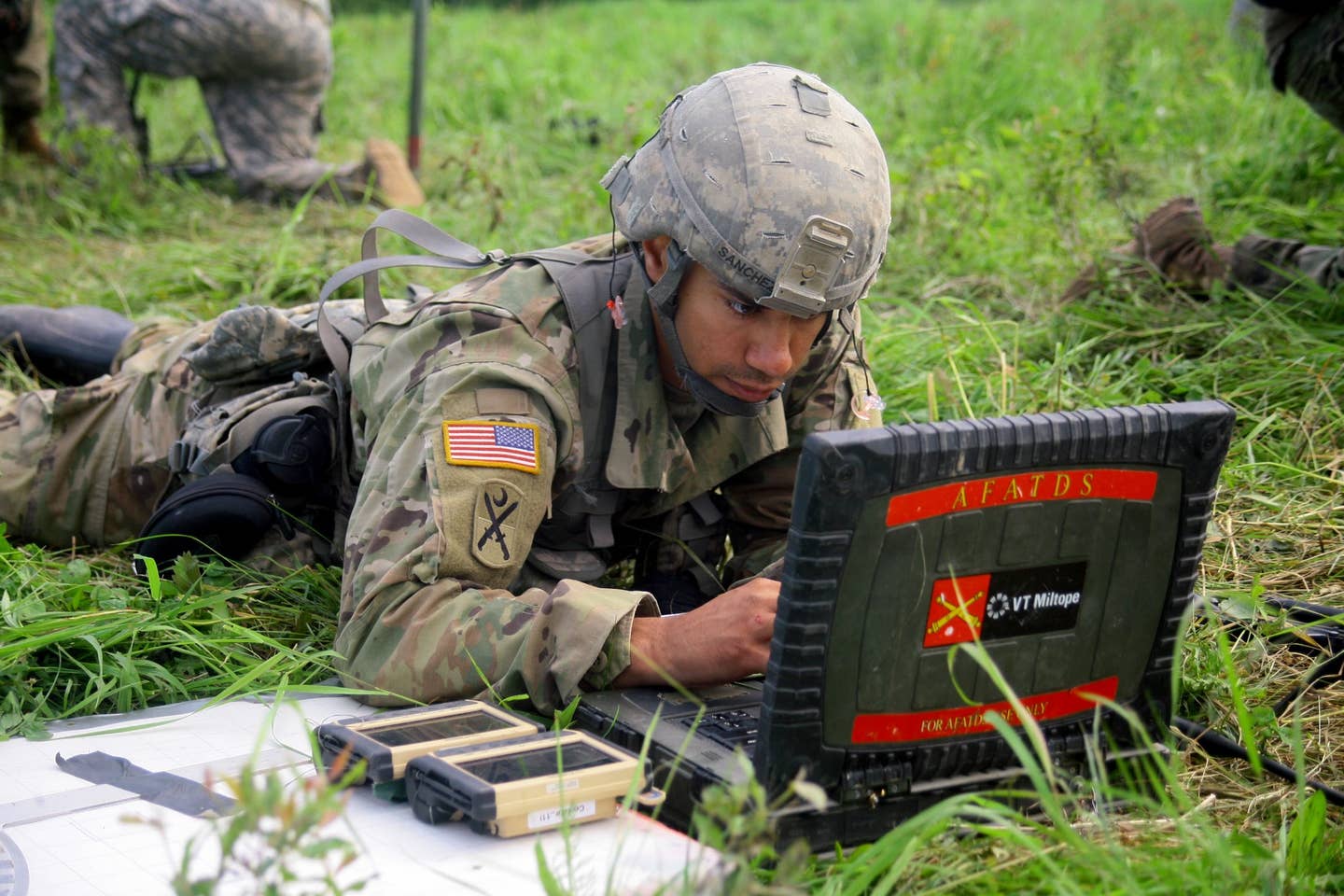The U.S.-provided M142 High Mobility Artillery Rocket Systems, or HIMARS have already made a huge difference for Ukraine and now the Pentagon is considering making them even more lethal.
The U.S. Army Contracting Command (ACC) at the Aberdeen Proving Ground last month put out a ‘Sources Sought’ notification for possible future delivery of International Field Artillery Tactical Data Systems (IFATDS) to Ukraine, as well as Taiwan and Latvia. The international export version of the Army’s Advanced Field Artillery Tactical Data System (AFATDS), IFATDS would increase HIMARS lethality by providing a secure communications system stitching together incoming information from various sources across the battlefield for a better common operating picture and greater situational awareness. This would give HIMARS operators a much better idea of where to fire the Guided Multiple Launch Rocket System (GMLRS) munitions that have already been used to devastating effect by Ukraine.
 The Pentagon, through the U.S. Army Contracting Command, is seeking potential sources for an international version of the Army’s Advanced Field Artillery Tactical Data System (AFATDS) for Ukraine, Latvia and Taiwan. (U.S. Army photo)
The Pentagon, through the U.S. Army Contracting Command, is seeking potential sources for an international version of the Army’s Advanced Field Artillery Tactical Data System (AFATDS) for Ukraine, Latvia and Taiwan. (U.S. Army photo)
AFATDS is an automated fire-support command, control, and communications system. It provides automatic processing of fire requests, munition updates, generates multiple tactical fire mission solutions, monitors mission execution and supports, creates, and distributes fire plans.
“IFATDS will give the operator the ability to have increased situational awareness in near real-time with one common operating system that can integrate with other systems like air-missile defense, counter unmanned aerial systems, intelligence etc,” Tony Lugo, a retired Army colonel who served as Chief of Staff of the Fires Center of Excellence at Fort Sill, Oklahoma, told The War Zone Wednesday. “I believe another consideration for fielding IFATDS is the ability to link in with our AFATDs or other countries that have IFATDS. Interoperability is a key component of the new technology the military is producing. It has to be able to link into our partners’ systems.”
The system “would increase the speed of operation and increase efficiency” of the kill chain, Connor Crehan, a former Army artillery captain told The War Zone.
As a package, IFATDS would provide users “with a secure, interconnected and integrated comms package that provides better, faster use on intel and integrated fire so they can respond to threats, save ammo, plan better and operate more efficiently,” Johnna Holeman, a former Army artillery lieutenant, told The War Zone.
The ACC request is seeking up to 18 IFATDS for Ukraine, up to 16 for Taiwan, which is expecting its first HIMARS shipments in 2027, and up to 55 for Latvia, which is planning to buy six HIMARS, according to Public Broadcasting of Latvia.
 The Pentagon is looking into an advanced fire control system for HIMARS it has provided to Ukraine and will provide to Taiwan and Latvia. (Photo by Gints Ivuskans / AFP) (Photo by GINTS IVUSKANS/AFP via Getty Images)
The Pentagon is looking into an advanced fire control system for HIMARS it has provided to Ukraine and will provide to Taiwan and Latvia. (Photo by Gints Ivuskans / AFP) (Photo by GINTS IVUSKANS/AFP via Getty Images)
This is not a request for proposals. ACC is merely looking to determine what companies can provide it with IFATDS hardware, software and associated Ultralink tactical modems, as well as classroom and field training, installation fielding support and post-deployment software support and one year of in-country field service support.
“The purpose of this market research/sources sought is to identify interested sources that are certified and able to provide requirements to Taiwan/Latvia/Ukraine,” according to the Sources Sought notification, which had a Dec. 2 deadline for submissions.
It is unclear how many if any such submissions were received by ACC.
We reached out to ACC for more details and will update this story with any information it provides.
If the Army is given the go-ahead to provide those systems to Ukraine, it will make a very powerful weapon even more fearsome and it will take better advantage of other new weapons and sensors Ukraine is getting from its allies. This would be especially true during dynamic operations with rapidly changing circumstances where targets of opportunity are prevalent. But we are still far off from such a system changing things on the battlefield, given that no contracts have even been awarded yet, let it being actually fielded by Ukraine.








